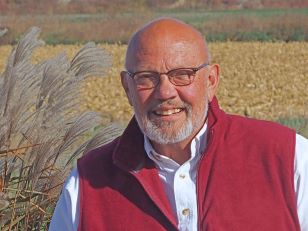Henry Whipple was one of the first students. Don’t be fooled–not the Henry Whipple, the famous Minnesota missionary who, in 1862, pleaded with President Lincoln for the lives of hundreds of Dakota braves and won.
This Henry Whipple was a cute little Navajo six-year-old, who no one on earth had called “Henry Whipple” until he came to the new school at the mission, Rehoboth Mission. In 1903, that Henry Whipple was one of Rehoboth’s very first students. He’s the little guy down on the left.
First crack out of the box, his teachers named the kid Henry Whipple because the Henry Whipple was a missionary hero.

But there was another reason too, that one not so noble. Those very first teachers, all of whom spoke with thick Dutch brogues, didn’t stand a chance of pronouncing Henry Whipple’s Navajo name–whatever it was–so they simply dropped it and gave him a name rich with honor and a whole lot easier to pronounce.
They likely didn’t ask him. After all, changing the boy’s name didn’t matter because they were there in New Mexico on a mission to teach the Navajo the gospel of Jesus Christ; and they were sure–just as all Anglos were back then, even those with thick Dutch brogues–that accomplishing that mission meant stripping a six-year-old Navajo kid of just about everything he’d ever known: cut his hair, dress him in white man’s clothes, teach him the Bible, the English language, and Heidelburg Catechism. That’s how Indian education was done, after all, in this country.
The truth is, there was a school at Rehoboth mission only because the mission wasn’t on the Navajo Reservation. It wasn’t placed where there was already an Indian school, where the government gave missionaries lots of good time with kids anyway because the government believed that bringing Native people Christianity was a super good way to make them forget they were Indians and make them real Americans.
It’s no wonder that many Native people across the continent, even today, think of Christianity as the white man’s religion. Even the government thought so: teach ’em to look decent, to speak English, drive a tractor, build a shed, and go to church. You know, get with the program: be an American like everyone else.
Today, no one knows what happened to Henry Whipple, the cute little boy you see on that first Rehoboth school picture because no one really knows his name. On that picture, he’s just Henry Whipple, not the missionary Henry Whipple.

Not long ago, Rehoboth Christian High School was named one of the premiere 50 Christian high schools in the nation. It’s a great honor really, even though no educator fully understands how someone decides who’s number 27 and who is 127. Rating institutions must be something of a crap shoot.
That being said, I’m sure Rehoboth Christian High is greatly thankful they are among the chosen, the elite, recognized to be what they are, one of the finest Christian high schools across the length and breadth of this country. Being one of the fifty best, no matter what kind of wizardry got them there, is far better than not showing up on the list.
That they are there is not a miracle. A school that began as a mission enterprise in the racist footsteps of every other educational institution on American reservations has slowly and stubbornly become something compellingly unique, a reservation school that not only works but excels, and one that does it all in the name of the Lord. There are teachers and administrators at Rehoboth–and I am blessed to know some of them–who work their hearts out to create a school dedicated to the glory of the risen Christ.
Hard work, dedication and endless prayer have played significant roles in creating an institution that’s become nearly as stunning as a sunset on the red rocks in the school’s front yard. There are many to thank, including some of the earliest folks, who recruited Navajo and Zuni kids the hard way, by building friendships, one family at a time, through long hours sitting in front a fire on the dirt floor of a hogan.
An old Rehoboth grad, someone whose kids and grandkids have all attended Rehoboth, told me his father claimed that the only reason he sent his boy down the road to the mission school was because that missionary, that Rev. Van–when that white man talked about living a good life he was really talking about what his father called “the beauty way.”
His father wasn’t a Christian, but his father sent his little boy to school at Rehoboth because he’d learned to trust the man who said the boy should be there.
There are other schools with Dutch Calvinist roots among the fifty best Christian high schools in the nation–Eastern, in New Jersey, Pella, in Iowa, Lynden, in Washington, Sioux Falls, in South Dakota, and Holland, in Michigan. Each of them has ties to each other and to Rehoboth, schools where the mission is teaching kids something akin to what one might find in John Calvin: “There is not one blade of grass, no color in the world, that is not intended to make us rejoice.” All of life belongs to Him.
But only one of those elite Christian high schools was not built for Dutch Calvinist kids. Only one was built for others, and only one was built for this country’s first nation people. That one is Rehoboth. We did a lot of it wrong through the years, but God almighty quite regularly weaves gorgeous blankets out of our filthy rags.
Really, Rehoboth Christian School is a miracle. Soli deo gloria.



